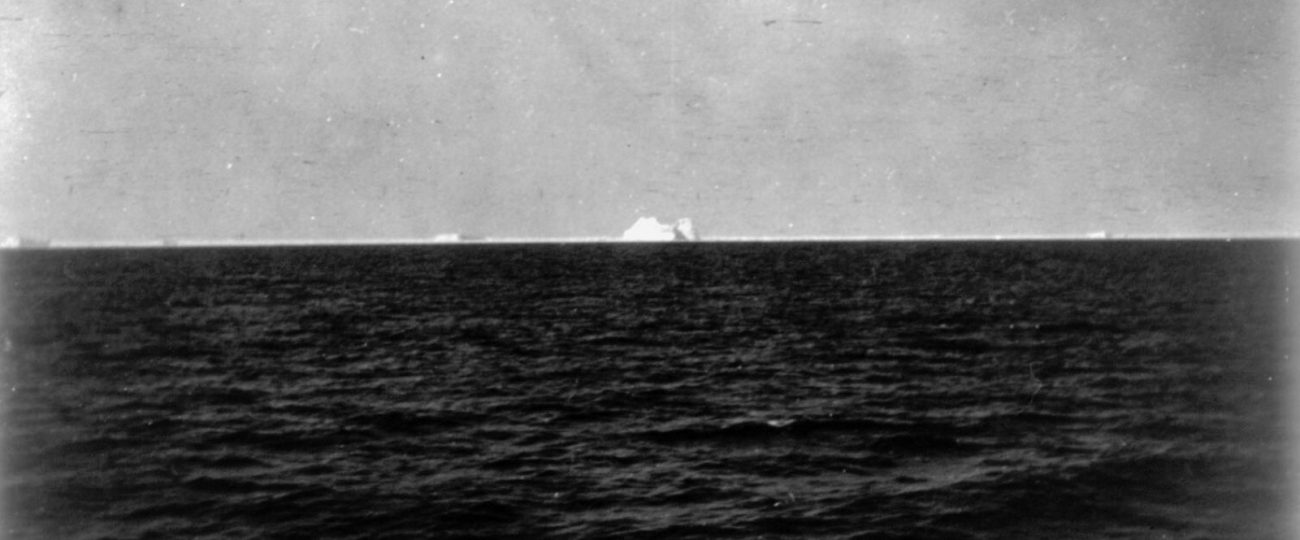What Happened On September 1st?
On September 1, 1985, the RMS Titanic was finally found deep in the North Atlantic Ocean. Dr. Robert Ballard and his team, aboard the research vessel Knorr, discovered the wreckage after weeks of searching. The Titanic had rested undisturbed for over 73 years. Argo, a remotely operated vehicle (ROV) equipped with cameras, sent back the first images of the shipwreck from nearly 13,000 feet below the surface.
Around 1:00 AM, Argo’s cameras captured a clear image of a Titanic boiler, confirming the discovery. The crew aboard Knorr realized the significance of what they had found. Following the debris trail, they soon saw the Titanic’s bow emerge from the darkness—a haunting sight that brought the tragedy into sharp focus. The ship lay in two main sections, with the bow and stern separated by a wide debris field.
The discovery filled the team with both excitement and solemnity. The bow section, partly buried in the seabed, appeared largely intact, while the stern showed severe damage from its descent. The condition of the wreck told a story of the ship’s violent end.
As the team explored the wreckage, they found a scene preserved in time. The ROV’s cameras revealed personal items scattered across the ocean floor—shoes, eyeglasses, and porcelain dishes still bearing the White Star Line emblem. These artifacts, protected by the cold and dark conditions, silently testified to the lives lost that night. A particularly poignant image showed a pair of men’s shoes lying side by side, suggesting the presence of a passenger whose body had long since decayed.
The bow, though heavily corroded, retained much of its iconic shape, including the railing that once lined the Titanic’s deck. In stark contrast, the stern lay twisted and broken, a grim reminder of the ship’s final moments. The ROV also captured images of the remains of the grand staircase, once a symbol of luxury and elegance, now barely recognizable amid the wreckage.
The Titanic’s metal structures had been slowly consumed by iron-eating bacteria, forming rusticles that draped large portions of the ship. These formations showed the ongoing decay but also supported a unique marine ecosystem around the wreck. The bacteria responsible for these rusticles were a newly discovered species named Halomonas titanicae in honor of the ship. Researchers found that these bacteria consumed the Titanic’s iron, leading to the conclusion that the wreck would likely dissolve completely within a few decades.
The discovery of the Titanic had more layers than initially revealed. Dr. Ballard’s search for the Titanic also served as a cover for a covert operation funded by the U.S. Navy. The Navy’s primary goal was to locate and survey two sunken nuclear submarines—the USS Thresher and USS Scorpion—that had been lost during the Cold War.
Ballard completed the Navy’s mission, documented the submarines’ wreckage, and gathered valuable information on their final resting places. The Thresher had suffered a catastrophic hull failure, while the Scorpion’s fate remained unclear. Once the Navy’s objectives were met, Ballard turned his attention to the Titanic. The timing of the search coincided with the U.S. Navy’s concerns about Soviet activities in the area, adding an extra layer of urgency and secrecy to the mission. This blend of Cold War espionage and a significant maritime discovery made the mission unique.
Now, the images of the wreck, broadcast globally, struck a deep chord with viewers and renewed interest in the ship’s tragic story. Museums and exhibitions began to display artifacts recovered from the debris field, drawing large crowds eager to connect with a piece of history that had been hidden beneath the sea for decades. Among the artifacts eventually retrieved was a violin belonging to Wallace Hartley, the Titanic’s bandleader, who had played as the ship went down. The violin, preserved in remarkable condition, became one of the most touching symbols of the disaster.
For the families of the Titanic’s victims, the discovery brought mixed emotions. Some felt a sense of closure in knowing where their loved ones had ended up, while others experienced renewed grief as the tragedy resurfaced. The ethics of salvaging artifacts from the wreck sparked intense debate, with some advocating for the site to be preserved as a memorial, while others saw the value in further exploration and study. This debate eventually led to international agreements that protected the wreck from unauthorized salvage operations, recognizing its significance as a maritime grave. In one instance, attempts to retrieve artifacts led to the recovery of a pocket watch that had stopped at the exact moment the ship sank, offering a stark reminder of the disaster’s timeline.
Ballard’s team systematically swept the ocean floor with sonar to locate the debris field, a method that later became standard in underwater searches. The ability to remotely control the ROVs from the surface ship Knorr enabled the team to navigate the challenging terrain of the ocean floor, overcoming the obstacles posed by the deep-sea environment. The equipment used in the mission was state-of-the-art for its time, and its success paved the way for future deep-sea exploration. The team also used advanced imaging technology to create a detailed map of the Titanic’s resting place, which provided crucial data for further studies of the wreck.
The mission’s success also highlighted the importance of international collaboration. Researchers from both the United States and France worked together to achieve the common goal. The French research vessel Le Suroît, equipped with advanced sonar technology, played a key role in mapping the ocean floor and narrowing down the search area. This partnership demonstrated the power of global cooperation in achieving such a monumental discovery. The French and American teams later created a joint plaque that they left on the wreck, honoring those who had perished in the disaster.





